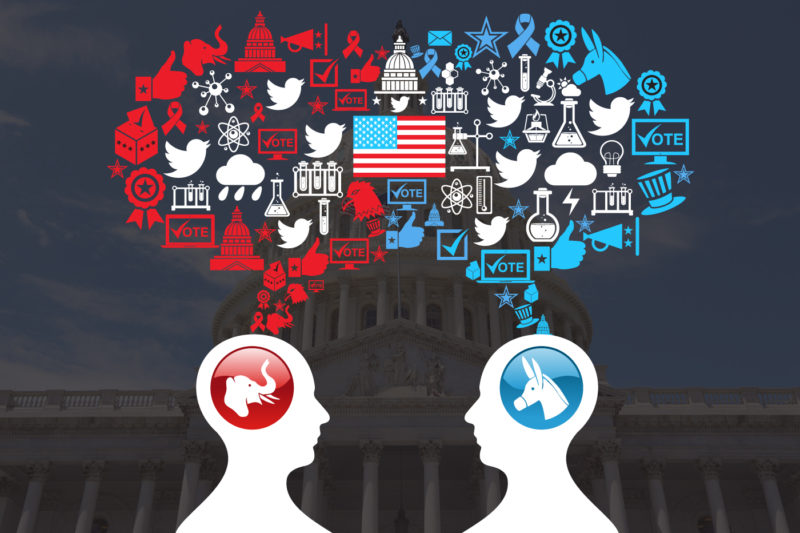
The rapid politicization of the COVID-19 pandemic can be seen in messages members of the U.S. Congress sent about the issue on the social media site Twitter, a new analysis found.
Using artificial intelligence and resources from the Ohio Supercomputer Center, researchers conducted an analysis that covered all 30,887 tweets that members sent about COVID-19 from the first one on Jan. 17 through March 31.
The algorithm they created could correctly classify the political party of the member who sent each tweet 76 percent of the time, based only on the text of the tweet and the date it was sent.
“We found that once the parties started to figure out the political implications of the issue, polarization was evident in the tweets pretty quickly,” said Jon Green, co-author of the study and doctoral student in political science at The Ohio State University.
The study was published June 24, 2020 in the journal Science Advances.
“It is remarkable that we could identify partisanship even when members have only 280 characters to send their messages in Twitter,” said study co-author Skyler Cranmer, the Carter Phillips and Sue Henry Professor of Political Science at Ohio State.
Democrats sent out significantly more tweets (19,803) about COVID-19 than did Republicans (11,084), the study showed.
The gap in the number of tweets sent by Democratic versus Republican politicians widened after the first case of community spread was identified in California and grew further following the declaration of a national emergency.
“This suggests Democratic members were sending earlier and stronger signals to their constituents that they should be concerned about the crisis,” Cranmer said.
What Democrats and Republicans tweeted about concerning the pandemic was different, too, results showed.
For example, the word “health” was used in 26 percent of Democratic tweets, but only 15 percent of Republican tweets.
Overall, Democrats were more likely to discuss public health and safety, as well as American workers, while Republicans emphasized a general need for national unity, discussed China and business, and framed the pandemic as a war.
As one component of the analysis, the researchers identified members who fell in the range of what they called “partisan overlap.” Congressional members in this overlap area were those whose tweets were more likely to be confused by the algorithm with those of someone from the other party.
Only 31 percent of members fell in this area.
“That means for 69 percent of members, their tweets are more partisan than the most similar member of the other party,” Green said.
Polarization was not constant over time.
In the first full week after the first mention of COVID-19, the algorithm developed by the researchers had relatively low accuracy when trying to determine whether a Democrat or a Republican wrote a particular tweet. That indicates there was little polarization.
However, polarization quickly rose, peaking during the week beginning Feb. 9. It then declined slightly in early-to-mid March before rising again in late March as the parties debated economic relief packages.
The findings suggest that Congress missed an opportunity early in the pandemic to develop a consensus that could have helped the United States respond to the crisis, Cranmer said.
“Something on the scale of COVID-19 requires a large-scale government response. The government can respond much better when it is united in its mission,” he said.


Leave a Reply